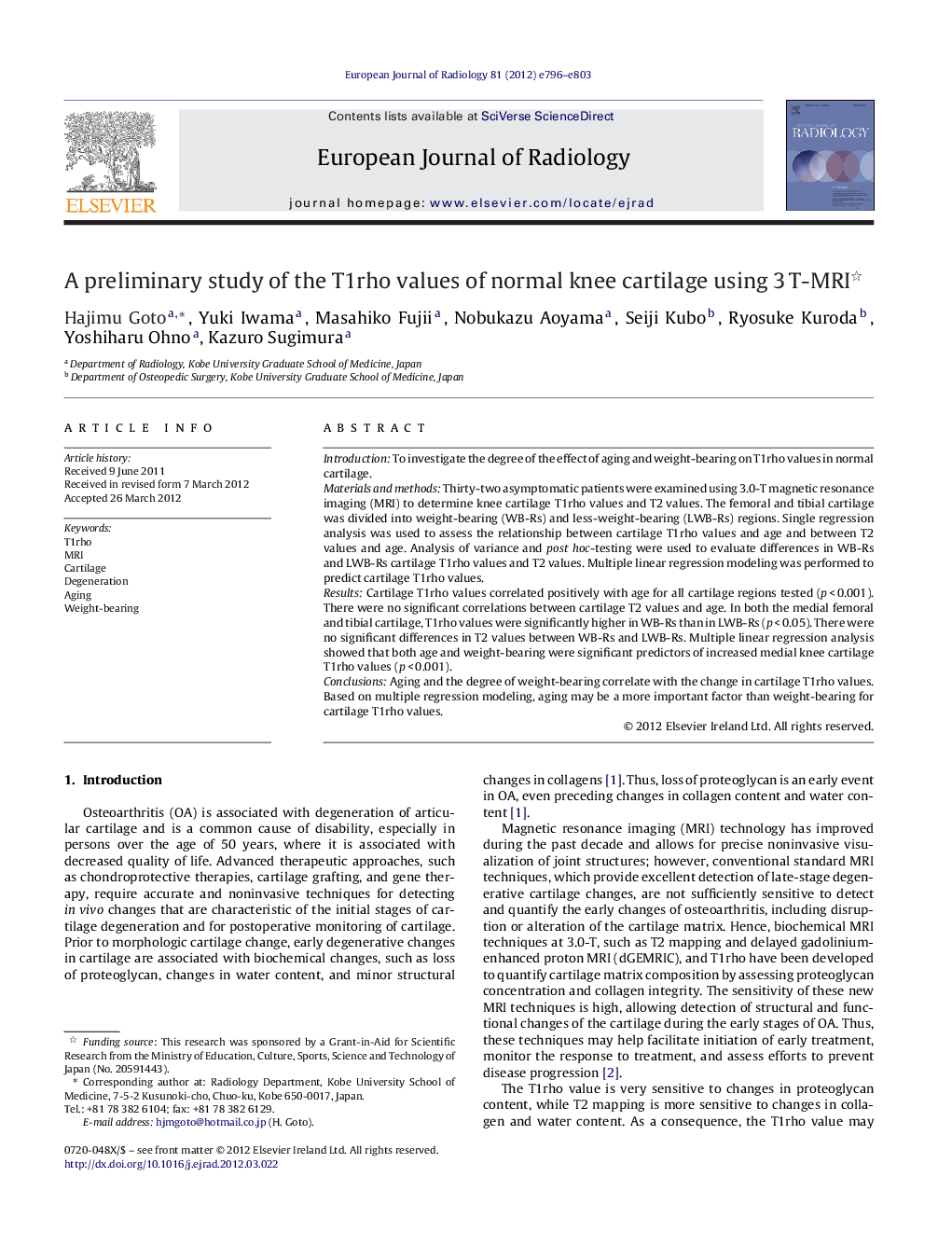| Article ID | Journal | Published Year | Pages | File Type |
|---|---|---|---|---|
| 4225795 | European Journal of Radiology | 2012 | 8 Pages |
IntroductionTo investigate the degree of the effect of aging and weight-bearing on T1rho values in normal cartilage.Materials and methodsThirty-two asymptomatic patients were examined using 3.0-T magnetic resonance imaging (MRI) to determine knee cartilage T1rho values and T2 values. The femoral and tibial cartilage was divided into weight-bearing (WB-Rs) and less-weight-bearing (LWB-Rs) regions. Single regression analysis was used to assess the relationship between cartilage T1rho values and age and between T2 values and age. Analysis of variance and post hoc-testing were used to evaluate differences in WB-Rs and LWB-Rs cartilage T1rho values and T2 values. Multiple linear regression modeling was performed to predict cartilage T1rho values.ResultsCartilage T1rho values correlated positively with age for all cartilage regions tested (p < 0.001). There were no significant correlations between cartilage T2 values and age. In both the medial femoral and tibial cartilage, T1rho values were significantly higher in WB-Rs than in LWB-Rs (p < 0.05). There were no significant differences in T2 values between WB-Rs and LWB-Rs. Multiple linear regression analysis showed that both age and weight-bearing were significant predictors of increased medial knee cartilage T1rho values (p < 0.001).ConclusionsAging and the degree of weight-bearing correlate with the change in cartilage T1rho values. Based on multiple regression modeling, aging may be a more important factor than weight-bearing for cartilage T1rho values.
